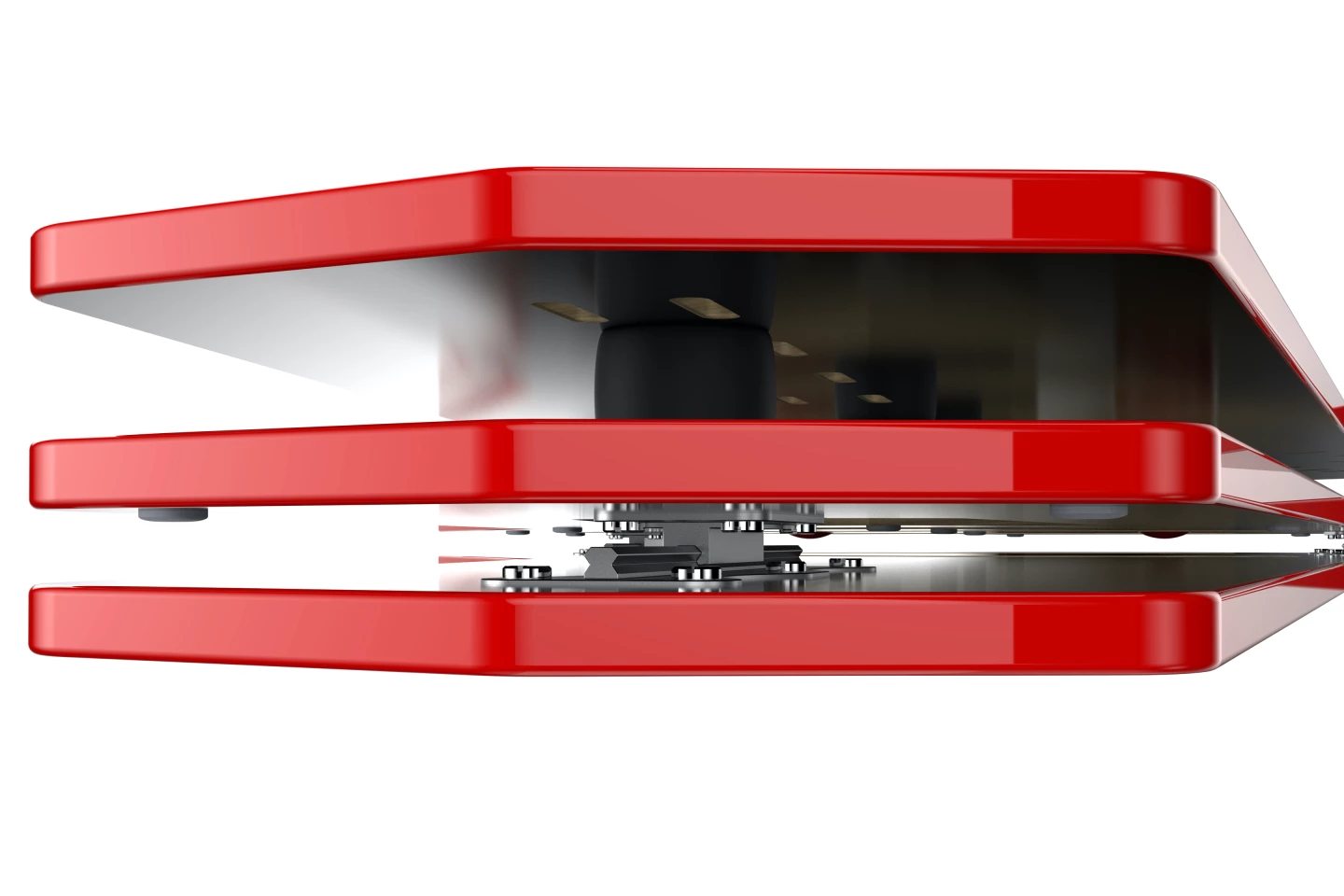While stationary trainers do allow users to cycle indoors, the things tend to just sit there and spin – with a few exceptions, that is. Rocker plates add some tilting action, though, with KOM Cycling's new RPV2 being the latest to hit the scene.
The idea with rocker plates in general is that once the user mounts their third-party trainer on them, they allow the trainer, bicycle and cyclist to tilt from side to side. Among other things, this motion is claimed to better simulate the feel of real-world cycling, while also building the rider's core strength and sense of balance.
KOM's previously released RPV1 works in this fashion. It consists of two plywood boards, with elastomer spacers and adjustable-pressure inflatable rubber balls sandwiched between them. The lower board sits against the floor, while the trainer is Velcro-strapped to the top board.
Once the bike has been added and the user starts cycling, the top board tilts from side to side relative to the lower board, with the rubber balls bringing it back to a default level state when the rider's balance is centered. The air pressure of those balls determines how easily the apparatus tilts, and how quickly it springs back.

The RPV2 adds a third board to the mix, located beneath what was previously the lower board. It's attached to that board via three laterally oriented roller bearing rails, allowing for up to 9 inches (229 mm) of fore/aft movement between the two. This means that as the rider shifts their weight forward and backward, the bike/trainer slides accordingly. That said, the RPV1's 13 degrees of side-to-side motion is also still there.
According to KOM Cycling, the RPV2 Full-Motion Rocker Plate is compatible with a wide variety of third-party trainers, it tips the scales at 66 lb (30 kg) and can accept a maximum combined user/trainer/bike weight of 425 lb (193 kg). It's available now, priced at US$799.99, plus a $449.99 conversion kit for RPV1 owners can also be purchased.
You can see the RPV2 in use, in the video below.
Potential buyers might also want to check out the Saris MP1 Nfinity – although it has a lower range of tilting motion, and costs $1,199.99.
Source: KOM Cycling






